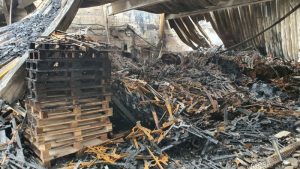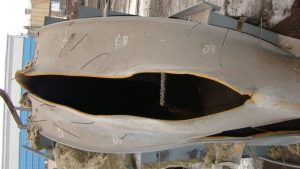Expert procedure
The expert procedure offers a possibility to determine the amount of damage out of court in case of damages and especially in case of major damages in the field of “machinery, mechanical engineering, plants”.
Basic problems with damage / major damage
The greater the damage, the greater the likelihood that the (injured) policyholder's "expectations" will differ from the determined amount of the expert on behalf of the insurer. This creates a potential for conflict.

Amount of damage
In the end, every damage is about time and money. For the affected company, it is important that their contracts with customers are honored despite the loss event. At the same time, machines have to be newly procured or refurbished. The options depend very much on the amount of damage. For example, if the determined insured value is lower than the sum insured agreed with the insurer, deductions are the consequence.
The requirements for a “good” settlement are correspondingly “high” on the side of the aggrieved policyholder. Since major losses, as shown in the picture, inevitably involve large sums of money, the expert procedure makes “sense” if the insurer and the policyholder cannot agree on an expert.

"Idea" of the expert procedure
Through the expert procedure, the amount of damage can be determined out of court. The insurance company and the injured policyholder shall each appoint an expert of their confidence. Both experts agree on an umpire who will only act if the two experts have not reached a common denominator on individual points. In these possible points of difference, the umpire finally decides.

Additional costs?
As a rule, the costs of the party's own expert are also insured. Then your insurer will also pay for the fee of the expert of your trust.

Legal basis
The expert procedure is regulated by law in §84 VVG (Insurance Contract Act) and § 10 AFB (General Conditions for Fire Insurance). This is an extrajudicial procedure to determine the amount of damage. The prerequisite for this is that you and the insurer agree on the implementation of such a procedure.

Two appraisals or one joint appraisal?
The two experts either write two separate expert reports or they can agree on a so-called "joint expert report" if they (want to) work closely together. In the case of the "joint opinion", which is written very often, the umpire is not needed.

Benefit for policyholder (injured party)
In expert proceedings, the injured party can therefore be particularly certain that an expert of his or her confidence will examine the findings of the expert on behalf of the insurance company and deal with them in detail from a professional point of view.
Some advantages of the expert procedure
The expert witness process is critical in expensive major machinery and equipment claims for several reasons:
-
Objective loss assessment: An expensive major loss often involves complex loss scenarios where it can be difficult to determine the exact extent and amount of damage. Another independent adjuster on the policyholder’s side has the expertise and experience to objectively and accurately assess the amount of loss. This is critical to ensure that the policyholder is adequately compensated.
-
Transparency: The expert procedure creates transparency in the claims settlement process. It ensures that all parties – the policyholder and the insurance company – have access to the same information and assessments. This minimizes the risk of disagreements and conflicts over the amount of damages.
-
Basis for negotiation: The expert opinion prepared by the expert serves as an objective basis for negotiation. Both the policyholder and the insurance company can rely on the expert opinion to support their positions and negotiate claims settlement.
-
Dispute resolution: In the event of disagreement over the amount of the loss, the expert procedure may serve as a means of dispute resolution. If both parties accept the expert’s findings, this can help resolve conflicts without having to take the legal route.
-
Cost control: For high-cost claims, accurate loss assessment is critical to ensure that the insurance company pays the appropriate compensation. An expert opinion helps to avoid unnecessary costs or undercompensation.
-
Accelerated settlement: The expert procedure can help speed up claims settlement by providing a clear basis for negotiations. This is especially important because time is of the essence in restoring business continuity when expensive damage occurs.
Overall, the expert procedure enables fair and efficient claims settlement in the case of expensive fire damage and major damage to machinery and equipment. It helps ensure that the policyholder receives the appropriate compensation and helps prevent disputes and delays in the settlement process.
Recommendation:
The expert procedure always takes a little longer due to two experts. However, it gives the aggrieved policyholder the certainty that two specialists with different principals have dealt with the issue and, in the event of disagreement, the umpire makes a binding decision on the remaining points to be clarified.
